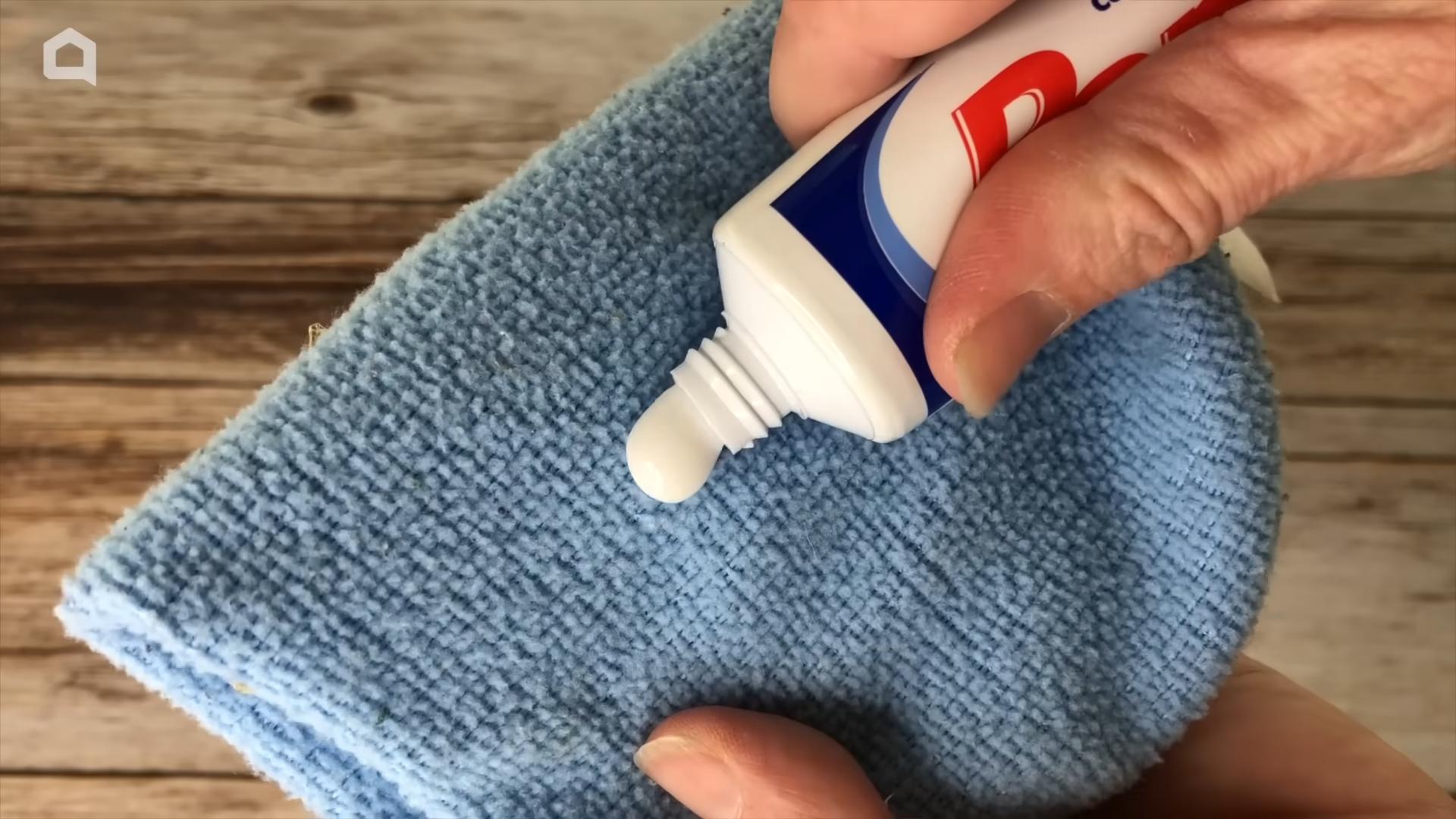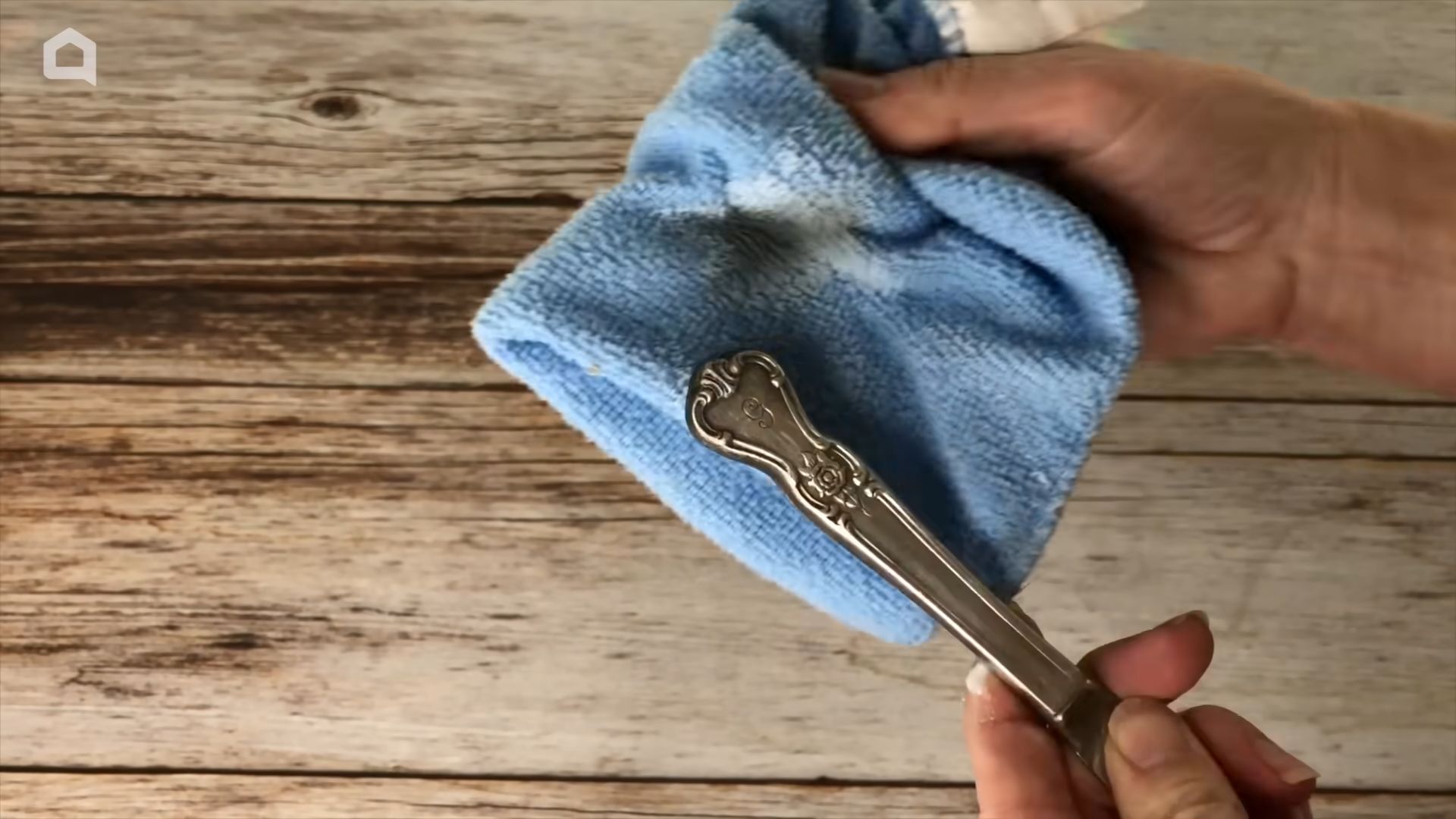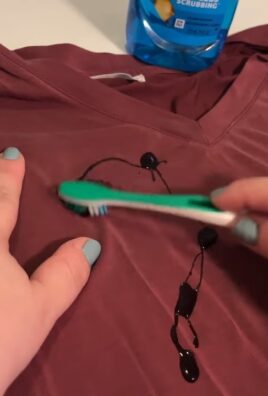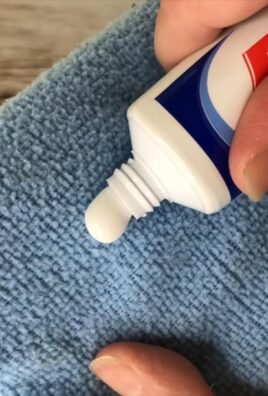Toothpaste hacks and uses – who knew this everyday essential held so many secrets? I certainly didn’t until I started digging! We all know toothpaste for its primary purpose: keeping our pearly whites sparkling. But what if I told you that tube sitting in your bathroom cabinet is a veritable Swiss Army knife for household problems?
For generations, people have relied on toothpaste for more than just oral hygiene. While its exact origins are debated, early forms of toothpaste can be traced back to ancient civilizations like the Egyptians and Chinese, who used mixtures of ingredients like crushed bones and herbs to clean their teeth. Fast forward to today, and we’re still discovering new and innovative ways to utilize this readily available product.
In this article, I’m going to share some amazing toothpaste hacks and uses that will blow your mind. From removing stubborn stains to polishing silver and even soothing minor burns, you’ll be amazed at the versatility of this humble product. Why spend money on specialized cleaners and remedies when you likely already have the solution sitting right under your nose? Let’s unlock the hidden potential of toothpaste and make your life a little easier (and your wallet a little heavier)!

Unlock the Magic: Unexpected Toothpaste Hacks You Need to Know!
Hey there, fellow DIY enthusiasts! I’m so excited to share some seriously cool and unexpected ways you can use toothpaste beyond just brushing your pearly whites. Seriously, this stuff is like a secret weapon for all sorts of household problems. Get ready to be amazed!
Cleaning Powerhouse: Toothpaste to the Rescue!
Toothpaste isn’t just for teeth; it’s a surprisingly effective cleaner for a variety of surfaces. The mild abrasives in toothpaste help to gently scrub away grime and stains without being too harsh.
Polishing Silverware and Jewelry
Tarnished silverware and jewelry can look dull and lifeless. But don’t worry, toothpaste is here to bring back the shine!
* What you’ll need: Toothpaste (non-gel), a soft cloth, water.
* Why it works: The mild abrasives in toothpaste gently remove tarnish without scratching the delicate surfaces.
Step-by-step instructions:
1. Apply a small amount of toothpaste: Squeeze a pea-sized amount of non-gel toothpaste onto a soft, clean cloth.
2. Gently rub the tarnished area: Gently rub the toothpaste onto the tarnished silverware or jewelry, using small, circular motions. Be careful not to apply too much pressure, especially on delicate items.
3. Rinse thoroughly: Rinse the item thoroughly with warm water to remove all traces of toothpaste.
4. Dry with a clean cloth: Use a clean, dry cloth to buff the item to a brilliant shine.
Cleaning Chrome Fixtures
Water spots and soap scum can make chrome fixtures look dull and grimy. Toothpaste can help restore their sparkle.
* What you’ll need: Toothpaste (non-gel), a soft cloth or sponge, water.
* Why it works: The mild abrasives in toothpaste help to remove water spots and soap scum without damaging the chrome finish.
Step-by-step instructions:
1. Apply toothpaste to the fixture: Apply a small amount of non-gel toothpaste directly to the chrome fixture.
2. Rub gently: Use a soft cloth or sponge to gently rub the toothpaste onto the fixture, focusing on areas with water spots or soap scum.
3. Rinse thoroughly: Rinse the fixture thoroughly with warm water to remove all traces of toothpaste.
4. Dry and buff: Dry the fixture with a clean, dry cloth and buff to a shine.
Removing Scuff Marks from Shoes
Scuff marks on shoes can make them look worn and old. Toothpaste can help remove these marks and restore your shoes to their former glory.
* What you’ll need: Toothpaste (non-gel), a soft cloth or old toothbrush, water.
* Why it works: The mild abrasives in toothpaste help to gently lift scuff marks from the surface of the shoe.
Step-by-step instructions:
1. Apply toothpaste to the scuff mark: Apply a small amount of non-gel toothpaste directly to the scuff mark.
2. Rub gently: Use a soft cloth or old toothbrush to gently rub the toothpaste onto the scuff mark, using small, circular motions.
3. Wipe clean: Wipe away the toothpaste with a damp cloth.
4. Dry: Allow the area to dry completely.
Cleaning Your Iron
Irons can get a build-up of residue from fabrics, which can affect their performance. Toothpaste can help clean the soleplate and keep your iron working smoothly.
* What you’ll need: Toothpaste (non-gel), a soft cloth, water.
* Why it works: The mild abrasives in toothpaste help to remove residue from the soleplate without scratching it.
Step-by-step instructions:
1. Make sure the iron is cool and unplugged: This is crucial for safety!
2. Apply toothpaste to the soleplate: Apply a thin layer of non-gel toothpaste to the cool soleplate of the iron.
3. Rub gently: Use a soft cloth to gently rub the toothpaste onto the soleplate, focusing on areas with residue.
4. Wipe clean: Wipe away the toothpaste with a damp cloth.
5. Dry: Dry the soleplate thoroughly with a clean cloth before using the iron again.
Beauty Boosters: Toothpaste for Skin and Nails
Believe it or not, toothpaste can also be used for a few beauty hacks. However, it’s important to use these sparingly and with caution, as toothpaste can be drying and irritating for some skin types.
Spot Treatment for Pimples
This is probably the most well-known toothpaste hack. Toothpaste can help dry out pimples and reduce inflammation.
* What you’ll need: Toothpaste (non-gel, plain white), a cotton swab.
* Why it works: Toothpaste contains ingredients like baking soda and hydrogen peroxide, which can help to dry out pimples and reduce inflammation.
Step-by-step instructions:
1. Cleanse the area: Gently cleanse the area around the pimple with a mild cleanser.
2. Apply a small amount of toothpaste: Using a cotton swab, apply a small amount of non-gel, plain white toothpaste directly to the pimple.
3. Leave it on overnight: Leave the toothpaste on overnight.
4. Rinse in the morning: In the morning, rinse the toothpaste off with warm water.
Important Note: This hack is not suitable for all skin types. If you have sensitive skin, test a small area first. Do not use gel toothpaste or toothpaste with whitening agents, as these can be irritating. And don’t use it on open wounds or broken skin!
Strengthening Nails
Toothpaste can help to strengthen weak and brittle nails.
* What you’ll need: Toothpaste (non-gel), a soft toothbrush.
* Why it works: The ingredients in toothpaste can help to strengthen the nail plate and improve its overall health.
Step-by-step instructions:
1. Apply toothpaste to your nails: Apply a small amount of non-gel toothpaste to your nails.
2. Gently scrub: Use a soft toothbrush to gently scrub the toothpaste onto your nails and cuticles.
3. Rinse thoroughly: Rinse your nails thoroughly with warm water.
4. Moisturize: Apply a moisturizer to your hands and nails.
Household Helpers: Toothpaste for Everyday Problems
Toothpaste can also be used to solve a variety of everyday household problems.
Removing Crayon Marks from Walls
Kids love to express their creativity, but sometimes that creativity ends up on the walls. Toothpaste can help remove crayon marks without damaging the paint.
* What you’ll need: Toothpaste (non-gel), a soft cloth, water.
* Why it works: The mild abrasives in toothpaste help to gently lift the crayon wax from the wall without damaging the paint.
Step-by-step instructions:
1. Apply toothpaste to the crayon marks: Apply a small amount of non-gel toothpaste directly to the crayon marks.
2. Rub gently: Use a soft cloth to gently rub the toothpaste onto the crayon marks, using small, circular motions.
3. Wipe clean: Wipe away the toothpaste with a damp cloth.
4. Dry: Dry the area with a clean cloth.
Defogging Mirrors
Foggy mirrors after a hot shower are annoying. Toothpaste can help prevent fogging.
* What you’ll need: Toothpaste (non-gel), a soft cloth, water.
* Why it works: Toothpaste creates a thin film on the mirror that prevents condensation from forming.
Step-by-step instructions:
1. Apply a thin layer of toothpaste: Apply a thin layer of non-gel toothpaste to the mirror.
2. Rub it in: Use a soft cloth to rub the toothpaste into the mirror, ensuring that it covers the entire surface.
3. Wipe clean: Wipe away the toothpaste with a damp cloth.
4. Buff: Buff the mirror with a clean, dry cloth to remove any streaks.
Removing Stains from Fabric
Toothpaste can help remove certain types of stains from fabric, especially ink stains.
* What you’ll need: Toothpaste (non-gel), a soft cloth, water.
* Why it works: The ingredients in toothpaste can help to break down the stain and lift it from the fabric.
Step-by-step instructions:
1. Apply toothpaste to the stain: Apply a small amount of non-gel toothpaste directly to the stain.
2. Rub gently: Use a soft cloth to gently rub the toothpaste onto the stain,

Conclusion
So, there you have it – a treasure trove of toothpaste hacks that extend far beyond just oral hygiene! From tackling stubborn stains to polishing surfaces and even soothing minor skin irritations, the versatility of this everyday item is truly remarkable. We’ve explored how toothpaste hacks can simplify your life, save you money, and offer eco-friendly alternatives to harsh chemical cleaners.
But why should you actually try these DIY tricks? Because they work! They’re cost-effective, readily accessible (you probably already have a tube in your bathroom!), and surprisingly efficient. Imagine effortlessly removing scuff marks from your shoes, restoring the shine to your silverware, or banishing that pesky pimple overnight – all with a simple dab of toothpaste.
Don’t just take our word for it, though. The real magic happens when you experiment and discover the power of these hacks for yourself.
Here are a few suggestions to get you started and inspire your own variations:
* **For Cleaning:** Try using a soft-bristled toothbrush to apply toothpaste to intricate jewelry or hard-to-reach areas on your sneakers. Experiment with different types of toothpaste (gel vs. paste, whitening vs. regular) to see which works best for specific cleaning tasks. Remember to always test on an inconspicuous area first.
* **For Stain Removal:** When tackling clothing stains, blot the toothpaste onto the affected area and let it sit for a longer period (up to an hour) before washing. For tougher stains, consider adding a small amount of baking soda to the toothpaste for extra cleaning power.
* **For Beauty:** If you have sensitive skin, opt for a non-whitening, fluoride-free toothpaste for spot treatments. You can also create a gentle exfoliating scrub by mixing toothpaste with a bit of sugar or baking soda.
We’re confident that once you experience the effectiveness of these toothpaste hacks, you’ll be hooked. They’re a game-changer for household chores, beauty routines, and even emergency repairs.
So, go ahead, grab that tube of toothpaste and unleash its hidden potential. We encourage you to try these hacks and share your experiences with us! Let us know which ones worked best for you, any variations you discovered, and any other creative uses you’ve found for this everyday essential. Your insights could inspire others to embrace the power of toothpaste and simplify their lives. Share your stories in the comments below – we can’t wait to hear from you!
Frequently Asked Questions (FAQ)
Is it safe to use toothpaste for all of these hacks?
Generally, yes, but with precautions. Always test a small, inconspicuous area first, especially when cleaning delicate surfaces or applying toothpaste to your skin. Avoid using whitening toothpaste on colored items, as it may cause discoloration. For sensitive skin, opt for non-whitening, fluoride-free toothpaste. If you experience any irritation or adverse reactions, discontinue use immediately. Remember, toothpaste is designed for oral hygiene, so use common sense and caution when applying it to other areas.
What type of toothpaste works best for these hacks?
The best type of toothpaste depends on the specific hack. For cleaning, a basic white paste toothpaste is often the most effective. Gel toothpaste may be suitable for some tasks, but it generally lacks the abrasive properties needed for stain removal. Whitening toothpaste can be effective for removing stains on white surfaces, but avoid using it on colored items. For skin treatments, choose a non-whitening, fluoride-free toothpaste to minimize irritation. Experiment to see what works best for your specific needs.
Can I use expired toothpaste for these hacks?
While expired toothpaste may not be as effective for oral hygiene, it can still be used for many of these hacks. The active ingredients may degrade over time, but the abrasive properties of the toothpaste will remain. Expired toothpaste is perfectly fine for cleaning, stain removal, and other non-oral applications. However, if the toothpaste has become excessively dry or hardened, it may not be as effective.
Will toothpaste damage the surfaces I’m cleaning?
Toothpaste is mildly abrasive, so it’s essential to use it with caution on delicate surfaces. Always test a small, inconspicuous area first to ensure that it doesn’t scratch or damage the material. Avoid using excessive pressure when applying toothpaste, and use a soft cloth or brush to gently rub the surface. For highly polished or easily scratched surfaces, consider diluting the toothpaste with water or using a less abrasive cleaning agent.
How long should I leave toothpaste on a stain before washing it off?
The amount of time you leave toothpaste on a stain depends on the severity of the stain and the type of surface. For minor stains, a few minutes may be sufficient. For tougher stains, you can leave the toothpaste on for up to an hour. However, it’s essential to monitor the area and ensure that the toothpaste doesn’t dry out completely. If the toothpaste starts to dry, dampen it with a wet cloth. After the allotted time, rinse the area thoroughly with water and repeat the process if necessary.
Can I use toothpaste to treat acne?
Toothpaste can be used as a spot treatment for acne, but it’s not a long-term solution. The ingredients in toothpaste, such as baking soda and hydrogen peroxide, can help to dry out pimples and reduce inflammation. However, toothpaste can also be irritating to the skin, especially if you have sensitive skin. Use a non-whitening, fluoride-free toothpaste and apply it sparingly to the affected area. Leave it on for a few minutes, then rinse thoroughly with water. If you experience any irritation, discontinue use.
Are there any surfaces I should avoid cleaning with toothpaste?
Avoid using toothpaste on surfaces that are easily scratched, such as soft plastics, painted surfaces, and certain types of metal. Also, avoid using toothpaste on porous materials, as it can be difficult to remove completely. Always test a small, inconspicuous area first to ensure that the toothpaste doesn’t damage the surface. When in doubt, consult the manufacturer’s instructions for cleaning specific items.
Can I use toothpaste to remove scratches from my phone screen?
While some people claim that toothpaste can remove minor scratches from phone screens, it’s generally not recommended. Toothpaste is abrasive and can potentially damage the screen’s coating or create more scratches. There are specialized products designed for removing scratches from electronic screens that are safer and more effective.
What are some other unexpected uses for toothpaste?
Besides the uses mentioned in the article, toothpaste can also be used to:
* Remove water rings from wooden furniture.
* Clean piano keys.
* Polish chrome fixtures.
* Remove crayon marks from walls.
* Clean your fingernails.
* Defog bathroom mirrors temporarily.
The possibilities are endless!
What if the toothpaste hack doesn’t work?
Not all toothpaste hacks are guaranteed to work in every situation. The effectiveness of a hack can depend on various factors, such as the type of toothpaste used, the severity of the stain or problem, and the type of surface being treated. If a hack doesn’t work the first time, try repeating the process or experimenting with different types of toothpaste. If you’re still unsuccessful, consider using a different cleaning agent or seeking professional help. Don’t be discouraged – sometimes, a little trial and error is necessary to find the right solution.





Leave a Comment